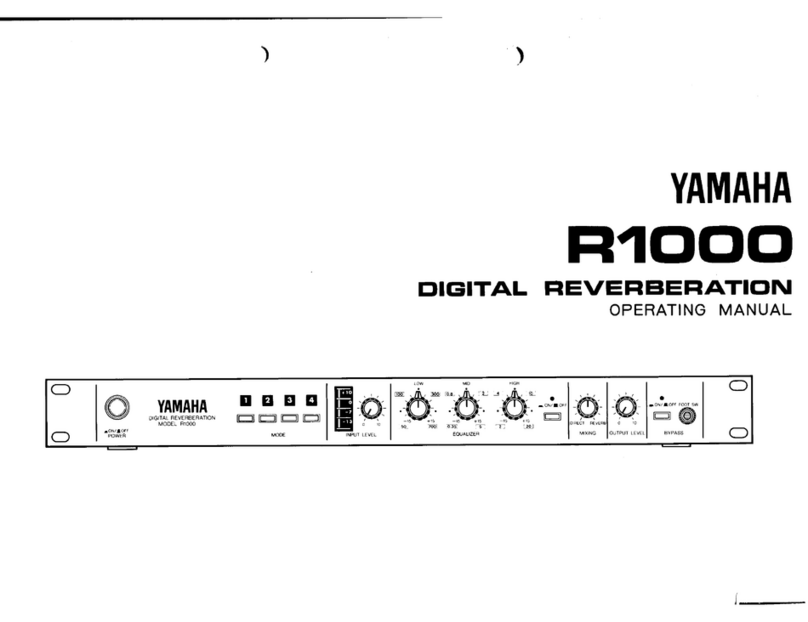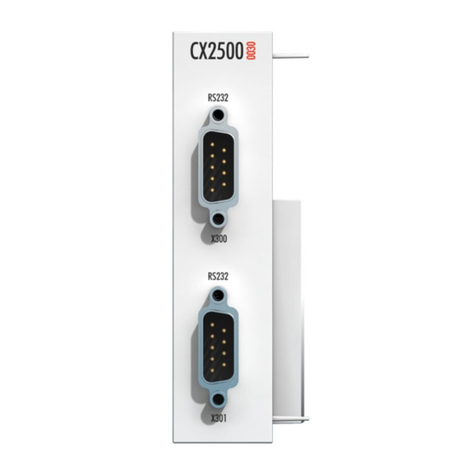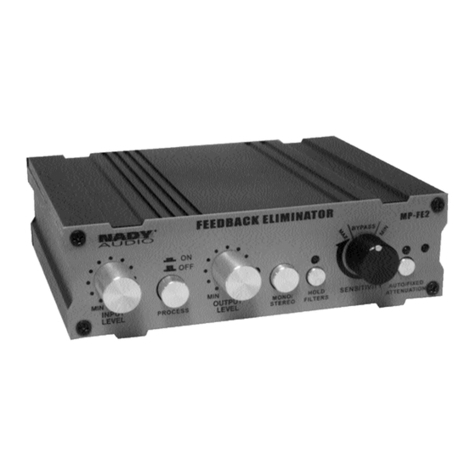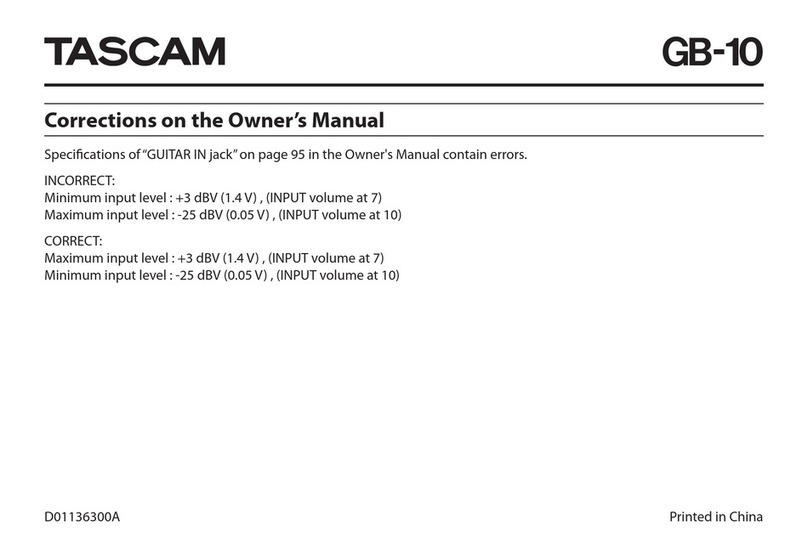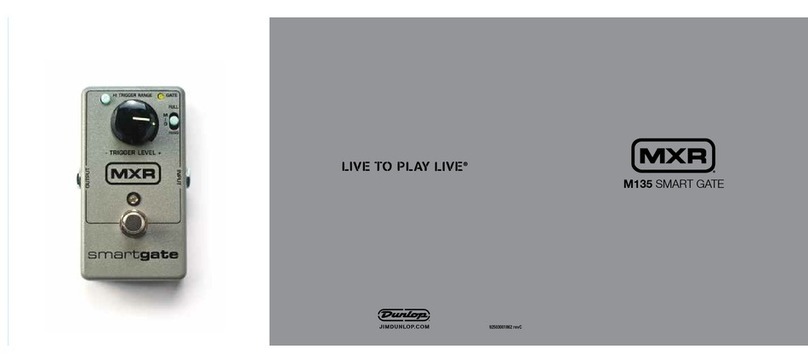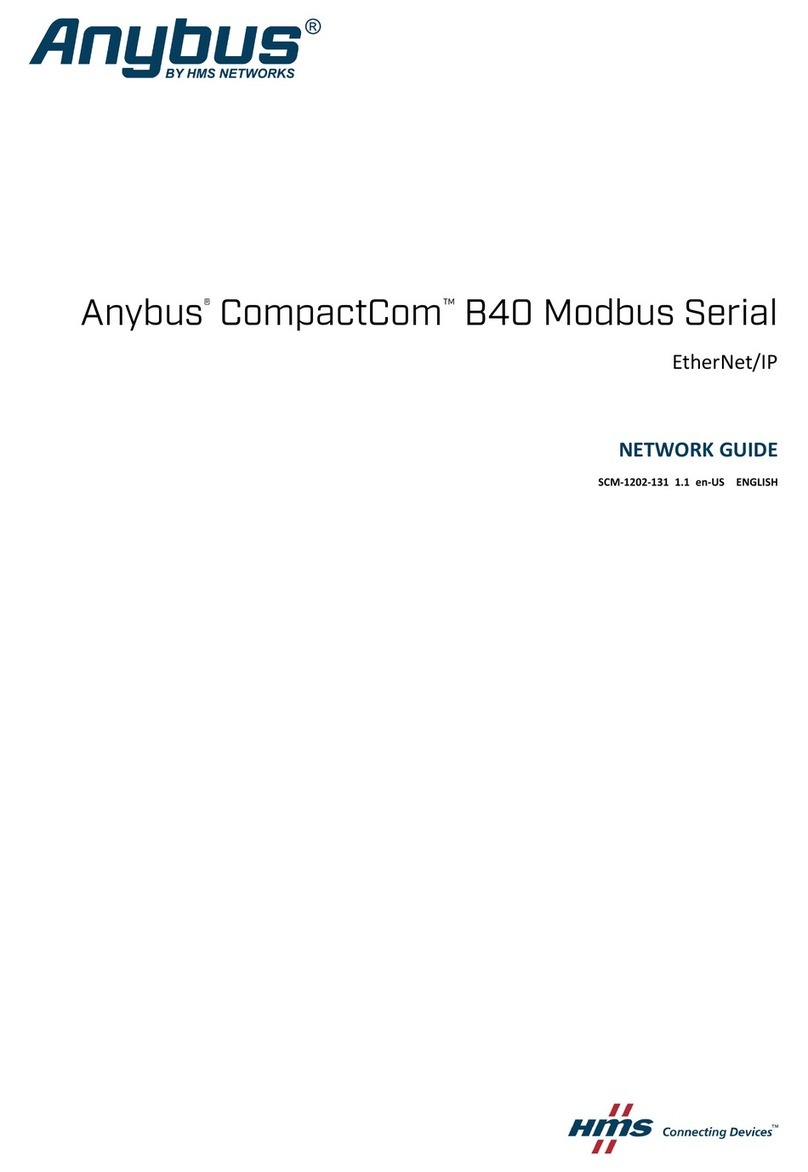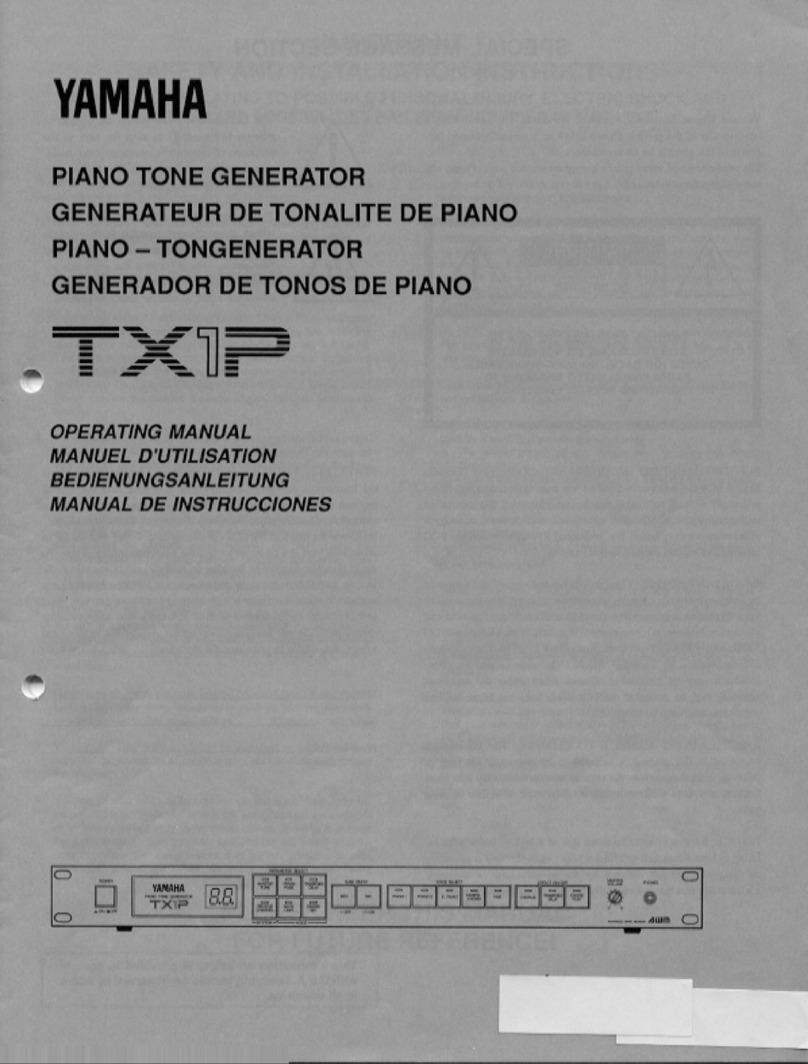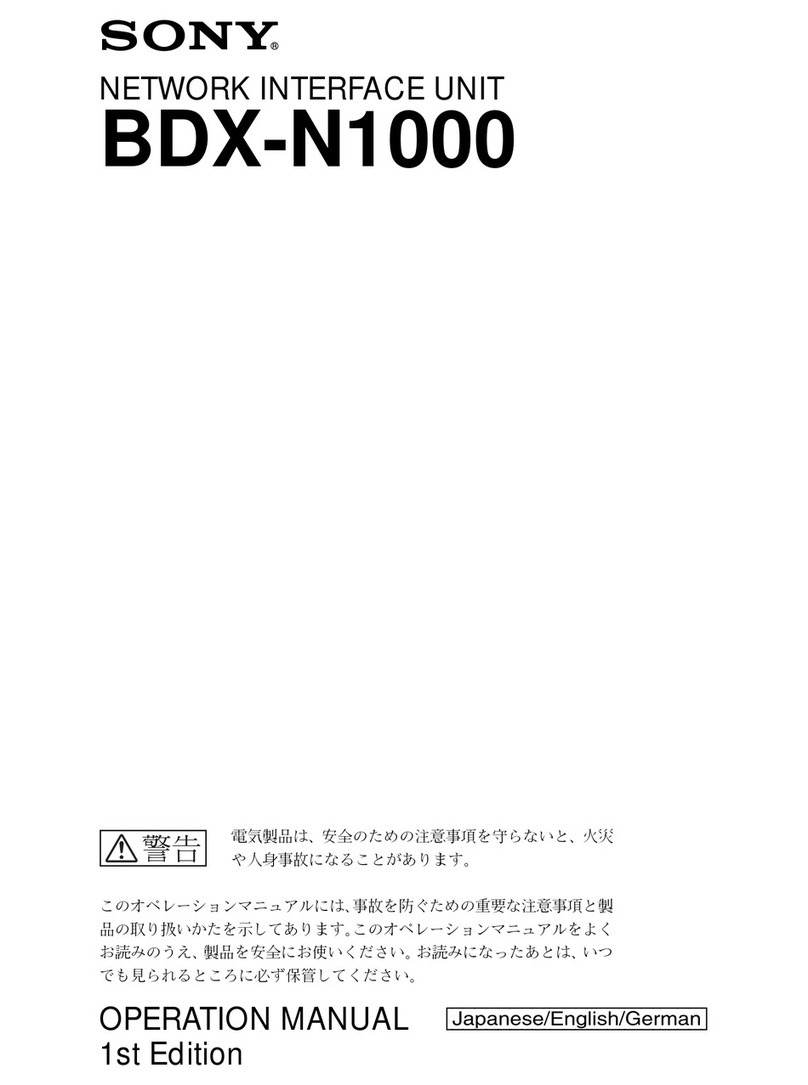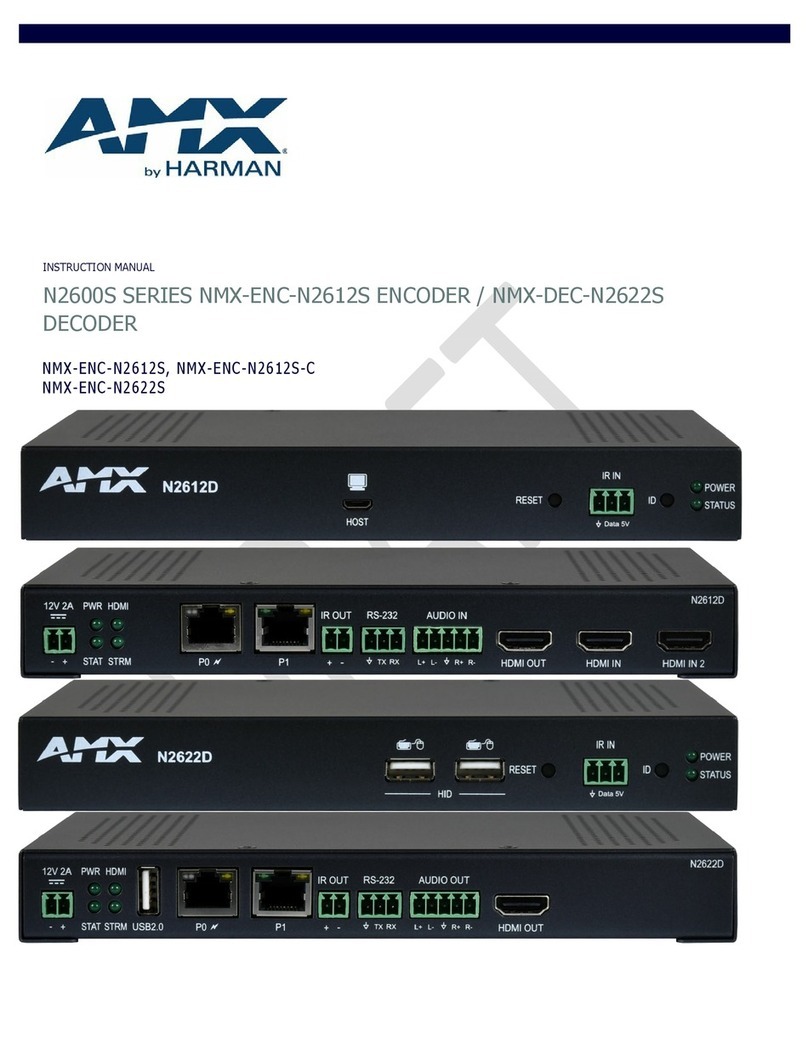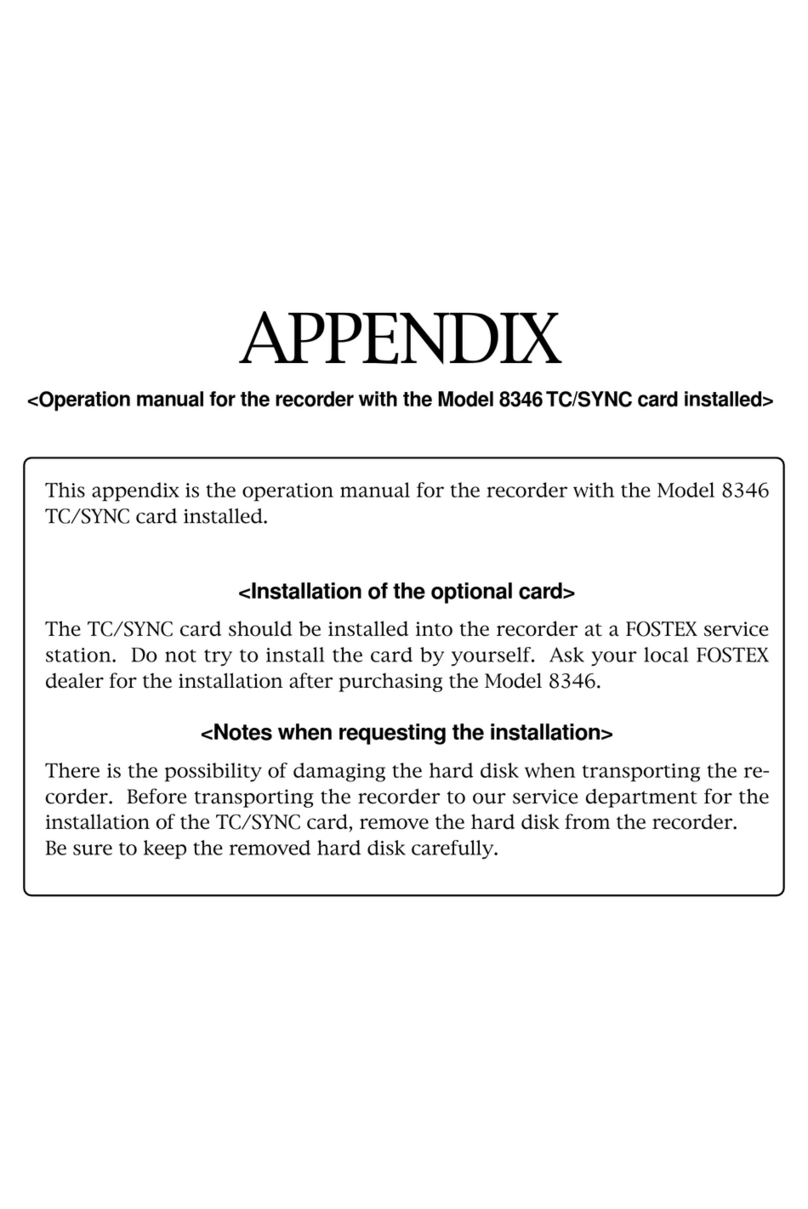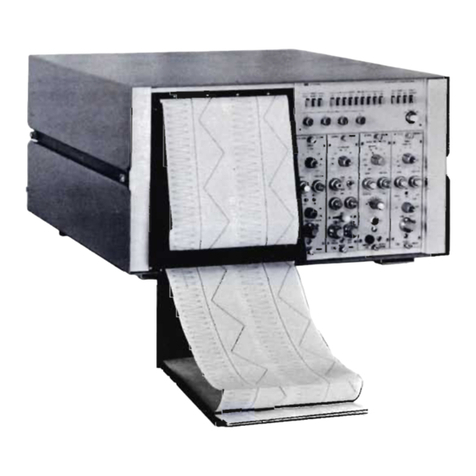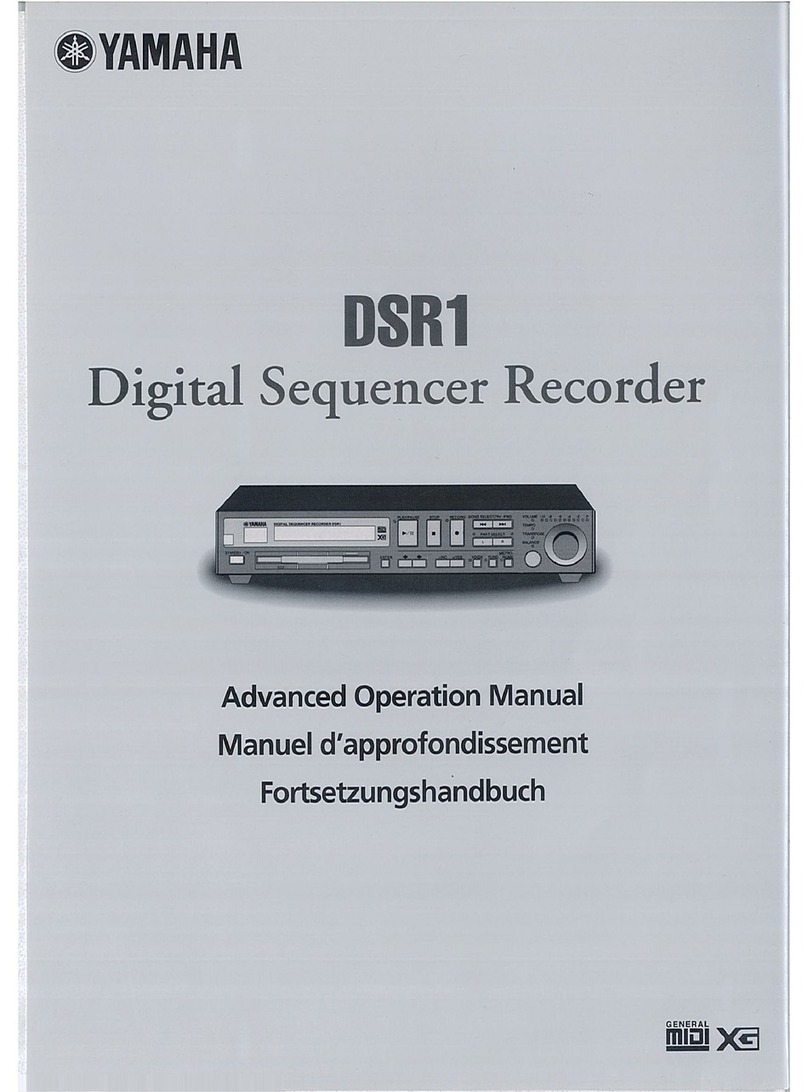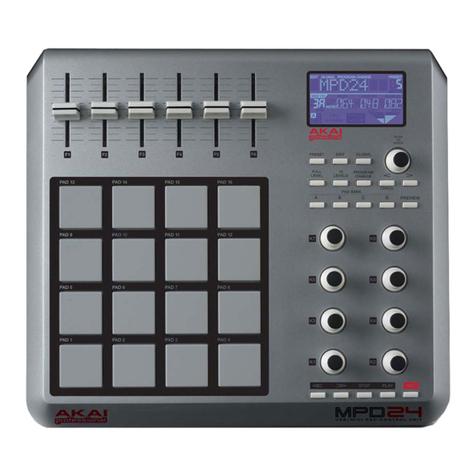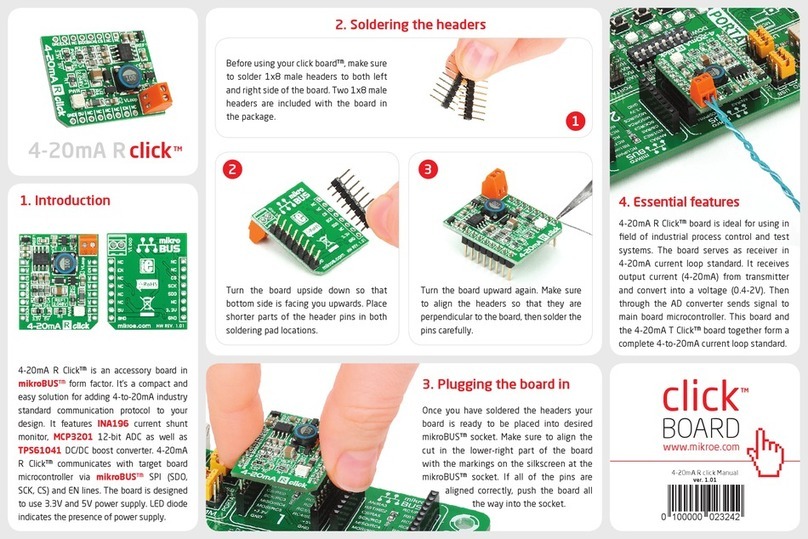Merging Technologies HAPI User manual

Hapi User Manual
Merging Technologies
Le Verney 4, CH-1070 Puidoux Switzerland
www.merging.com/horus T : +41 21 946 04 44 F : +41 21 946 04 45
Hapi User Manual
Revision 0.06 8.06.15

www.merging.com/hapi Page 2
Hapi User Manual
Contents
Hapi Warranty Information......................................................................................................................9
Contacting Merging .................................................................................................................................9
Introduction to Hapi...............................................................................................................................10
Hapi block diagram................................................................................................................................11
Hapi modules interconnection diagram ..............................................................................................12
Hapi optional cards...........................................................................................................................................................15
Hapi cables ...........................................................................................................................................................................23
Hapi key features ...................................................................................................................................28
Hapi Modules Capabilities .............................................................................................................................................30
Hapi Modules Latencies..................................................................................................................................................30
Installing an additional Hapi I/O Module..............................................................................................31
Installing a Hapi MADI Module (MADM or MADS are optional) ....................................................................32
Assembling the rack mount ears .........................................................................................................34
Installing the Merging PCIe Ethernet Controller Card NET-MSC-GBEX1.......................................35
Hapi power ON .......................................................................................................................................37
Hapi OLED screen interface..................................................................................................................39
Hapi Menu Hierarchy.......................................................................................................................................................39
Screen navigation ..............................................................................................................................................................40
Home Screen........................................................................................................................................................................40
Volume Menu ......................................................................................................................................................................41
Meters Menu........................................................................................................................................................................41
A/D Meters Sub-Menu (Meters)..................................................................................................................................41
D/A Meters Sub-Menu (Meters)..................................................................................................................................42
Input Levels Sub-Menu (Meters) ................................................................................................................................42
Output Levels Sub-Menu (Meters) .............................................................................................................................42
Meters Settings Menu ......................................................................................................................................................43
I/O Menu ...............................................................................................................................................................................43
Sync Sub-Menu (I/O) .......................................................................................................................................................43
Refs Sub-Menu (I/O) ........................................................................................................................................................44
Timecode Sub-Menu (I/O).............................................................................................................................................45
Status Sub-Menu (I/O) ....................................................................................................................................................45
PreAmp Menu .....................................................................................................................................................................46
Setup Menu...........................................................................................................................................................................48
Formats Menu (Setup).....................................................................................................................................................48
Routing Menu (Setup) .....................................................................................................................................................49
Routing: Source Configuration.....................................................................................................................................49
Modules Menu (Setup) ....................................................................................................................................................50
Heaphone Menu .................................................................................................................................................................52
Modules: MADI Sub-Menu .............................................................................................................................................52
Modules: A/D Sub-Menu ................................................................................................................................................53
Modules: ADA Sub-Menu................................................................................................................................................53
Modules: D/A Sub-Menu ................................................................................................................................................54
Modules: Loopback (hidden menu, available only for debug use) ...............................................................54
Presets Menu (Setup).......................................................................................................................................................55
System (Setup): ..................................................................................................................................................................56
Network Menu (Setup)....................................................................................................................................................57
Info (Setup):.........................................................................................................................................................................57
ERROR Menu .......................................................................................................................................................................58
EXIT Menu ............................................................................................................................................................................58

www.merging.com/hapi Page 3
Hapi User Manual
Hapi Web Control access......................................................................................................................59
Installing and accessing the Hapi Control interface remotely ........................................................................59
The Hapi embedded User Manual...............................................................................................................................62
Hapi & Horus setup examples ..............................................................................................................65
Hapi Firmware update procedure.........................................................................................................71
Hapi troubleshooting.............................................................................................................................76
Hapi on screen Error Report.........................................................................................................................................76
How to provide Merging Support with a Hapi debug dump file ....................................................................78
Cannot access Hapi remotely in Maintenance mode for Firmware update ..............................................78
Firewall and Antivirus.....................................................................................................................................................78

www.merging.com/hapi Page 4
Hapi User Manual
IMPORTANT SAFETY AND
INSTALLATION INSTRUCTION
SAVE THESE INSTRUCTIONS
INSTRUCTIONS PERTAINING TO RISK OF FIRE, ELECTRIC
SHOCK, OR INJURY TO PERSONS
WARNING –when using electric products, basic precautions should be followed, including the following:
1. Read all of the safety and installations instructions and explanation of graphic symbols before using
the product.
2. The product must be grounded otherwise it could malfunction or breakdown. Grounding provides a
path of least resistance or electric current to reduce the risk of electric shock. This product is equipped
with a power supply cord having an equipment-grounding conductor and a grounding plug. The plug
must be plugged into an appropriate outlet which is properly installed and grounded in accordance with
all local codes and ordinances.
DANGER –Improper connection of the equipment-grounding can result in a risk of electric shock. Do
not modify the plug provided with the product –if it will not fit the outlet have a proper outlet installed
by a qualified electrician. Do not use an adapter that defeats the function of the equipment-grounding
conductor. If you are in doubt as to whether the product is properly grounded, check with a qualified
serviceman or electrician.
3. Do not use this product near water –for example, near a bathtub, washbowl, kitchen sink, in a wet
basement, or near a swimming pool, or the like.
4. This product should only be used with a stand or cart that is recommended by the manufacture.
5. This product, either alone or in combination with an amplifier and speakers or headphones, may be
capable of producing sound levels that could cause permanent hearing loss. Do not operate at a high
volume level or at a level that is uncomfortable. If you experience any hearing loss or ringing in the
ears, you should consult an audiologist.
6. The product should be located so that its location or position does not interfere with its proper
ventilation.
7. The product should be located away from heat sources such as radiators, heat registers, or other
products that produce heat.
8. The product should be connected to a power supply only of the type described in the operating
instructions or as marked on the product.
9. The power-supply cord of the product should be unplugged from the outlet when left unused for a
long period of time. When unplugging the power supply, do not pull on the cord, but grasp it by the
plug.
10. Care should be taken so that objects do not fall and liquids are not spilled into the enclosure through
openings.
11. The product should be serviced by qualified service personnel when: A. The power supply cord or
plug has been damaged. Objects have fallen, or liquid has spilled into the product, or C. The product
has been exposed to rain, or D. The product does not appear to be operating normally or exhibits a

www.merging.com/hapi Page 5
Hapi User Manual
marked change in performance, or E. The product has been dropped, or the enclosure damaged.
12. Do not attempt to service the product beyond that described in the user maintenance instructions.
All other servicing should be referred to qualified service personnel.
13. WARNING - Do not place objects on the power supply cord, or place the product in a position
where anyone could trip over, walk on, or roll anything over cords of any type. Do not allow the
product to rest on or be installed over cords of any type. Improper installations of this type create the
possibility of a fire hazard and/or personal injury.
The lightning flash with arrowhead symbol, within an equilateral triangle, is intended to
alert the user to the presence of uninsulated "dangerous voltage" within the product's
enclosure that may be of sufficient magnitude to constitute a risk of electric shock to persons.
The exclamation point within an equilateral triangle is intended to alert the user to the
presence of important operating and maintenance (servicing) instructions in the
literature accompanying the product.
No part of this documentation may reproduced in any form whatsoever or be stored in any data retrieval
system without prior written permission of the copyright owners.
This documentation is supplied on an as-is basis. Information contained within this documentation is
subject to change at any time without notice and must not be relied upon.
All company and product names are ™ or Registered Trademarks ® of their respective owners.
Windows 7 is a trademark of Microsoft Corporation.
Merging Technologies makes no warranties express or implied regarding the Hapi embedded software,
its quality, performance, merchantability or fitness for a particular purpose. The software is supplied “as
is” you, the purchaser, are assuming the entire risk of the results of using this Merging Technologies
software.
In no circumstances will Merging Technologies, its owners, directors, officers, employees or agents be
liable to you for any consequential, incidental or indirect loss or damages including loss of time, loss of
business, loss of profits, loss of data or similar resulting from the use of or inability to use the Merging
Technologies hardware and or software or for any defect in the hardware software or documentation.
© Copyright Merging Technologies Inc. 2014. All rights reserved.

www.merging.com/hapi Page 6
Hapi User Manual
IMPORTANT NOTICE:
Please read the following information very carefully before attempting any installation. Failure to comply with the
precise instructions may result in damage to your Merging hardware. Please read this entire section of the manual
carefully before installation.
STATIC DANGER NOTICE:
Please note that the Hapi contains delicate electronic components that can be damaged or even destroyed when
exposed to static electricity. Take all necessary precautions not to discharge static electricity when touching any of
the Hapi connectors.
Product Regulatory Compliance
The Merging Hapi Network Converter is designed and tested to meet the standards and regulations listed in the
following sections.
Product Safety Compliance
Hapi complies with the following safety requirements:
UL 1950 –CSA 950 (US/Canada).
EN 60 950 (European Union).
IEC 60 950 (International).
CE –Low Voltage Directive (73/23/EEC) (European Limits).
EMKO-TSE (74-SEC) 207/94 (Nordics).
Product EMC Compliance
The system has been tested and verified to comply with the following EMC regulations:
FCC (Class A Verification) –Radiated and Conducted Emissions (USA).
CISPR 22, 3rd Edition (Class A) –Radiated and Conducted Emissions (International).
EN45022 (Class A) –Radiated and Conducted Emissions (European Union).
EN45024 (Immunity) (European Union).
EN6100-3-2 & -3 (Power Harmonics and Fluctuation and Flicker).
CE –EMC Directive (89/33/EEC) (European Union).
Electromagnetic Compatibility Notices
This device complies with Part 15 of the FCC Rules. Operation is subject to the following two conditions: (1) this
device may not cause harmful interference and (2), this device must accept any interference received, including
interference that may cause undesired operation.
This equipment has been tested and found to comply with the limits for a Class A digital device, pursuant to Part
15 of the FCC Rules. These limits are designed to provide reasonable protection against harmful interference in a
residential installation. This equipment generates, uses, and can radiate radio frequency energy and, if not
installed and used in accordance with the instructions, may cause harmful interference to radio communications.
However, there is no guarantee that interference will not occur in a particular installation. If this equipment does
cause harmful interference to radio or television reception, which can be determined by turning the equipment off
and on, the user is encouraged to try to correct the interference by one or more of the following measures:
Reorient or relocate the receiving antenna.
Increase the separation between the equipment and the receiver.
Connect the equipment to an outlet on a circuit other than the one to which the receiver is connected.
Consult the dealer or an experienced radio/TV technician for help.
Any changes or modifications not expressly approved by the grantee of this device could void the user’s authority
to operate the equipment. The customer is responsible for ensuring compliance of the modified product.
Only peripherals (computer input/output devices, Ethernet switches, terminals, printers, etc.) that comply with
FCC Class B limits may be attached to this computer product. Operation with noncompliant peripherals is likely
to result in interference to radio and TV reception.
All cables used to connect to peripherals must be shielded and grounded. Operation with cables, connected to
peripherals that are not shielded and grounded, may result in interference to radio and TV reception.

www.merging.com/hapi Page 7
Hapi User Manual
Environmental Limits
System Office Environment Parameter Limits
Operating Temperature +5 degrees C to +45 degrees C with the maximum rate of change not to exceed 10
degrees C per hour.
Non-Operating Temperature -40 degrees C to +70 degrees C
Non-Operating Humidity 95%, non-condensing @ 30 degrees C
Operating Shock No errors with a half sine wave shock of 2G (with 11-millisecond duration).
Package Shock Operational after a free fall, 60 cm depending on the weight.
ESD 15kV per Merging Environmental Test Specification

www.merging.com/hapi Page 8
Hapi User Manual
Declaration of Conformity
According to
EMC Directive 2004/108/EC
Product Horus
Manufacturer Merging Technologies SA
Le Verney 4
CH-1070 Puidoux
Switzerland
Electrical Rating 90-260 VAC, 50/60 Hz, 0.2 A (at 230V)
Standards EN 55103-1:2009, EN 55103-2:2009, EN 61000-3-
2 :2006+A1+A2, EN 61000-3-3 :2008
Detailed specifications of the tested and certified product are shown in the
following Test Report:
Test report Ref No: 16'835 Issued Date: June 2012 by Montena EMC SA
The CE label is affixed on the rear of left side of the Horus unit as per below :
Date 12 June 2012
Claude Cellier
President
Merging Technologies S.A.

www.merging.com/hapi Page 9
Hapi User Manual
Hapi Warranty Information
This product is warranted to be free of defects in materials and workmanship for a period of one year
from the date of purchase. Merging Technologies, Inc. extends this Limited Warranty to the original
purchaser.
In the event of a defect or failure to confirm to this Limited warranty, Merging Technologies, Inc. will
repair or replace the product without charge within sixty (60) days. In order to make a claim under this
limited warranty, the purchaser must notify Merging Technologies, Inc. or their representative in writing,
of the product failure. In this limited warranty the customer must upon Merging Technologies, Inc.
request, return the product to the place of purchase, or other local designation, for the necessary
repairs to be performed. If the consumer is not satisfied with the repair, Merging Technologies, Inc. will
have the option to either attempt a further repair, or refund the purchase price.
This warranty does not cover: (1) Products which have been subject to misuse, abuse, accident,
physical damage, neglect, exposure to fire, water or excessive changes in the climate or temperature,
or operation outside maximum rating. (2) Products on which warranty stickers or product serial numbers
have been removed, altered or rendered illegible. (3) The cost of installations, removal or reinstallation.
(4) Damages caused to any other products. (5) Do not attempt to service the equipment. There are no
user serviceable parts inside*. Please refer all servicing to an authorized Merging sales partner. Any
attempt to service the equipment will expose you to a risk of electric shock, and will void the
manufacturer’s warranty.
* Replacing or adding a AD, DA or MADI module and adjusting the DA module dip switch (output) is permitted
under the supervision of a Merging sales partner. Any other modification will void the Hapi warranty.
Contacting Merging
International Office:
Merging Technologies S.A.
Le Verney 4
CH-1070 Puidoux
Switzerland
Phone: +41 21 946 0444
Fax: +41 21 946 0445
USA:
Merging USA (Independent Audio)
43 Deerfield Road
Portland,
ME 04101-1805
United States of America
Phone: +1 (207) 773 2424
Fax: +1 (207) 773 2422
For all documentation inquiries or suggestions for improvement:
www.merging.com
© 2014 All rights reserved. Merging Technologies, Horus and Hapi are registered Trademarks of
Merging technologies SA.
Product features and specifications are subject to change without notice.
Merging Technologies SA shall not be liable for technical or editorial errors contained herein, nor for
incidental or consequential damages resulting from the furnishing, performance or use of this manual.

www.merging.com/hapi Page 10
Hapi User Manual
Introduction to Hapi
Modular by Design
Hapi, the son of Horus. Born from the most flexible and sonically transparent audio interface and
providing the same RAVENNA / AES67 connectivity as its father, Hapi is both the perfect primary
interface for smaller systems as well as the ultimate accessory for a system using Horus where control
room I/O is required. Hapi was designed to give its users an Audio I/O channels flexibility while offering
an unprecedented level of quality in such a small form factor.
Providing as standard; 8 channels of AES- EBU I/O plus 8 ADAT or 2 SPDIF I/O (on TOSLINK) and 2
slots for AD8D/AD8P, DA8/DA8P and MADI option cards. Once the Hapi is fully loaded with option
cards, it is capable of achieving 88 inputs and 90 outputs @ 1FS There are indeed 2 more output
channels than input channels, including the Stereo Headphone Monitoring.
Route Signal Anywhere
Hapi has been designed so that any input can be routed to any number of outputs as required
simultaneously. With comprehensive routing pages accessible both locally on the touchscreen and by
remote access using a standard web browser, Hapi is the answer to signal flow management in your
studio.
Green Built
For environmentally-conscious users, Hapi has been designed meticulously in order to keep power
consumption at an incredible minimum. A fully loaded Hapi running all channels of phantom power will
only draw about 30W, making it more affordable to run than your kitchen lights.
Hapi Key Features
• Up to 88 inputs and 90 outputs @1FS
• 8x AES/EBU + 8x ADAT or 2x SPDIF (Optical)
• Works from 44.1kHz to 192kHz (Premium up to DXD/DSD256)
• Signal routing from any input to any combination of outputs
• RAVENNA / AES67 Compatible
• Browser-based remote access using any web enabled device
• AC or DC power supply options
• Modular design for additional analog and Digital I/O
• Near-zero latency from in to out (<1ms)
• Main rotary control button
RAVENNA
The Hapi has been designed so that the MADI, AES, SPDIF/ADAT and Analog modules can all feed
into or take their sources from the network over RAVENNA streams, providing up to 88 channels of I/O
@ 1FS over a single CAT5e or CAT6 cable to any other RAVENNA devices on the network.
The RAVENNA connection on the Hapi allows for not only audio, but also control and sync information
to flow through as well. Send Timecodes and Wordclock directly to the Hapi unit over the same network
as your audio. The RAVENNA port even provides for remote control access to the configuration and
entire routing of the unit itself! Support for: LTC/Video Ref/WCK
RAVENNA is a layer 3 IP based protocol. In environments where existing networks are already in
place, RAVENNA subnets can slip right into place with no additional outlay. In laymen’s terms, this
means that you can connect your Hapi to a properly configured network exactly as you would your PC
or Mac, with no additional technology required.
RAVENNA is a “mission critical” protocol, meaning that is has been designed to ensure immensely low
jitter rates and latencies (sub-millisecond) and ensures that every single sample gets to where it needs
to go without fail. Hapi also provides a secondary, redundant RAVENNA connection allowing for
uninterrupted use, even when a network connection fails.
Refer to the RAVENNA User Guide and the MassCore-RAVENNA Configuration Guide for more details

www.merging.com/hapi Page 11
Hapi User Manual
Hapi block diagram
Audio Router
PAD
Low
cut Phase
Analog input 1
Mic/Line
PAD
Low
cut Phase
Analog input 16
Mic/Line
.
.
.
.
.
.
.
.
.
.
.
.
.
.
.
.
.
.
AES 1 - 8
MADI coaxial 1 - 64
MADI optical 1 - 64
CPU with integrated Web server 1.8" OLEDPower supply
90 –230VAC / 50 - 60 Hz
10 –14VDC
Optional DC input
Inputs Outputs
AES 1 - 8
MADI coaxial 1 - 64
MADI optical 1 - 64
(option)
Ravenna
input streams Ravenna
output streams
Monitoring 6.3mm Jack
Monitoring 3.5mm Jack
Preamp gain
Analog line output 1
Line level
selection
Analog line output 16
Line level
selection
Preamp gain
.
.
.
.
.
.
.
.
.
.
.
.
.
.
.
.
.
.
Hapi Block Diagram
LTC / Sync
Video ref. input
Wordclock input
LTC in Wordclock output
LTC out
ADAT / SPDIF 1-8
ADAT / SPDIF 1- 8
(option)

www.merging.com/hapi Page 12
Hapi User Manual
Hapi modules interconnection diagram
AES OUT
(SubD25)
RAVENNA
Internal
busses
D/A OUT
(SubD25)
AES
IN
(SubD25)
A/D
IN
(SubD25)
RAVENNA
Source Network
RAVENNA
Sink
Network
Loopback
module
Output
source
Transparency
generator
Wave
generator
Loop
Mode
Transparency
checker
Loop
Mode
Loopback
module
Live
Internal
busses
ADAT / SPDIF
IN
(Toslink) ADAT / SPDIF OUT
(Toslink)

www.merging.com/hapi Page 13
Hapi User Manual
HAPI HARDWARE
FRONT PANEL
BACK PANEL
HAPI UNIT
HAPI SCHEMATIC IMAGES
Front Panel
Back Panel

www.merging.com/hapi Page 14
Hapi User Manual
HAPI BASE UNIT
IOC-HAPI Specifications
Case Material Powder Coated Steel
Front Panel Material Brushed Aluminum
Weight (excluding redundant PS) 4.5 kg / 10 lbs
Dimensions (1U rack mounting) 483 x 320 x 44 mm
Voltage (AC) 90V–260V, 47–63 Hz
Voltage (DC) (option IOC-HAPI-PSR) 10-14V
Power Consumption (Max) < 30 Watts
Front Panel TFT size/resolution OLED (160x128 px)
Headphone Monitor Jacks
Headphone Jack 1&2 6.3 mm(1/4”)/3.5mm
Max output Level (Unbalanced) Load = 300 Ohms +14.5 dBu
Output Impedance 75 Ω
Dynamic Range (A-weighted, typ.) 112 dB
THD+N (1 kHz) @ -2 dBFS < -100 dB (0.001 %)
Gain Range (software controlled) - ∞dB to +12 dB
Gain Step/Precision 1dB / ±0.05 dB
SYNC Connectors
“Sync” Cable (LTC/Video Ref) D-Sub 15Pin
LTC In & Out (via “Sync” Cable) Balanced XLR
Video Reference In (via “Sync” Cable) BNC
Word Clock Input (Switchable 75 Ω Termination) BNC, 0.5Vp-p min
Word Clock Output (Zout = 35 Ω) BNC, 5Vp-p
Maximum supported deviation +/-1000ppm
RAVENNA module
RAVENNA Primary / Secondary (GbE) RJ45
AES-EBU module
AES type/pinout DB-25 / AES59 (Tascam Dig.)
AES i/o Grounded and transformer coupled
Output Impedance 110 Ω
MADI module
MADI types (Coaxial / Optical) BNC / SC
Output Impedance 75 Ω
ADAT/SPDIF module
ADAT/SPDIF Optical Toslink
Software Specifications
RAVENNA MassCore Driver Pyramix v8.0 or Higher / Win7 32bit or 64bit
Windows Driver/OS ASIO 2.2 / Win7 32 or 64bit
Mac Driver/OS CoreAudio / MacOS 10.8.5 or higher (Intel)

www.merging.com/hapi Page 15
Hapi User Manual
Hapi optional cards
IOM-HORUS-AD8/AD8P
These remotely controlled Mic/Line Input cards have set a new benchmark in analog circuitry design.
Available in models that work up to 192kHz (AD8) and DXD/DSD256 (AD8P)
IOM-HORUS-AD8/AD8P Key Features
• 8 x exceptionally transparent, Swiss designed pre-amplifiers
• Remote/Local switch to Line Level on a per channel basis
• Completely accessible remotely for all parameter changes
• Phantom Power/Phase/Low Cut switchable per channel
• Better than 120dB dynamic range
IOM-HORUS-AD8/AD8P Specifications
IOM-HORUS-AD8/AD8P Mic Pre-Amp + ADC
Mic Pre Max Input (Pad On / Pad Off) +24 dBu / +13 dBu
Input Impedance (Differential) 1.75 kΩ
Dynamic Range (A-weighted, typ.) , ref +13 dBu 122 dB
Gain Range (software controlled) 0 dB to +66 dB
Gain Step/Precision 0.5 dB / ±0.2 dB
THD+N Pre + A/D (20 Hz-20 kHz) @ -2 dBFS (AD8/AD8P) 0.0016 % / 0.001 %
Interchannel Crosstalk @ 1kHz, typ. -125 dB
EIN @ >40 dB Gain (150Ω Source Impedance, A-weighted, typ.) -128 dBu
Common Mode Rejection Rate @ 1kHz, typ. 75 dB
Phantom Power (Software Switchable Per Channel) +48V
Phase Reverse (Software Switchable Per Channel) YES
Low Cut filter (Software Switchable Per Channel) -12 dB/octave, 80 Hz
Line Input
Max Line Input for 0 dBFS +24 dBu
Input Impedance (Differential) 6.5 kΩ
Dynamic Range (A-weighted, typ), ref +24 dBu 122 dB
THD+N Line+A/D (20 Hz-20 kHz) @ -10 dBFS, typ.. -106 dB (0.0005%)
Interchannel Crosstalk @ 1kHz, typ. -125 dB
Sensitivity Range for 0 dBFS (software controlled) -36 dBu to +24 dBu
Gain Step/Precision 0.5 dB / ±0.2 dB
Common Mode Rejection Rate @ 1kHz, typ. 75 dB
Connector Pinout DB-25 / AES59 (Tascam Ana.)
IOM-HORUS-AD8/AD8P Mic-Pre Analog Section
Frequency response +0/-0.5 dB, Line 5 Hz - 75 kHz
Frequency response +0/-2.0 dB, Line 2.5 Hz - 150 kHz
Frequency response +0/-0.5 dB, Mic 10 Hz - 100 kHz
Frequency response +0/-2.0 dB, Mic 5 Hz - 200 kHz
THD+N (1 kHz), Line/Mic at G=0dB <-115 dB (0.00018 %)
THD+N (20 Hz-20 kHz) , Line/Mic at G=0dB <-112 dB (0.00025 %)
Interchannel Crosstalk @ 1kHz, typ. -135dB
5° low-end in-channel Ø deviation pt: Line 13 Hz
5° low-end in-channel Ø deviation pt: Mic 35 Hz
Interchannel phase 10 Hz - 100 kHz < ±0.1°

www.merging.com/hapi Page 16
Hapi User Manual
IOM-HORUS-AD8D/AD8DP
These cards have the same specifications as the IOM-HORUS-AD8/AD8P cards and provide
additionally a Line level post Mic-pre “Direct Out” output.
Available in models that work up to 192kHz (AD8D) and DXD/DSD256 (AD8DP)
IOM-HORUS-AD8D/AD8DP Key Features
• Removes the need for DI boxes
• Allows build-in Mic splitting variants
IOM-HORUS-AD8D/AD8DP Direct Out Section
Frequency response +0/-0.3dB @ Gain 40dB 10 Hz –50kHz
Max Direct Output level typ. +18.5 dBu
Output Impedance (Differential) < 100 Ω
Dynamic Range (A-weighted, typ) 124.5 dB
THD+N (1 kHz) @ +11dBu < -109dB (0.00035 %)
Input Connector Pinout DB-25 / AES59 (Tascam Ana.)
Direct Output Connector Pinout DB-25 / AES59 (Tascam Ana.)
Gain behavior of the Direct Out section
As the Direct Out output is taken just after the Mic-pre analog section, the gain adjustments are not as
smooth and linear as after the digital conversion. The figure below shows the behaviour of the gain on
the Direct Out (in blue) compared to the gain on the digital side (in red).
Note: on the Direct Out the maximum available gain is + 40.1 dB.

www.merging.com/hapi Page 17
Hapi User Manual
IOM-HORUS-DA8/DA8P
The DA8 (up to 192kHz) and the DA8P (up to DSD) have been shown in testing to be consistently the
quietest multichannel D/A conversion modules available anywhere.
IOM-HORUS-DA8/DA8P Key Features
• Auto-mute circuitry for “no-pop” power cycling
• Digitally controlled trims for line up procedures
• Dynamic range of 127dB (typ.)
• Software control or easy to set dip switches for international operating levels
IOM-HORUS-DA8/DA8P Specifications
Max Line Output @ 0 dBFS (jumpers on +24 dBu) +24 dBu +0/-0.5 dB
Frequency response +0/-0.3dB @ fs = 48000 Hz 6 Hz –20 kHz
Frequency response +0/-0.3dB @ fs = 2.8224 MHz (DSD) NA / 6 Hz –20 kHz
Frequency response +0/-3.0dB @ fs = 2.8224 MHz (DSD) NA / 2 Hz –50 kHz
Line Output Impedance (Differential) 100 Ω
Dynamic Range (A-weighted, typ) 126 dB
THD+N D/A (1 kHz) @ 0 dBFS (IOM-HORUS-DA8) < -113dB (0.00022 %)
THD+N D/A (1 kHz) @ 0 dBFS (IOM-HORUS-DA8P) < -115dB (0.00018 %)
Interchannel Crosstalk @ 1kHz, typ. -135 dB
Connector Pinout DB-25 / AES59 (Tascam Ana.)

www.merging.com/hapi Page 18
Hapi User Manual
Line Output Level calibration
The DA8 and DA8P modules feature both hardware level settings and a software fine adjustment to
align the Analog Output levels to whatever local/organization operational levels are mandated.
On DA8/DA8P cards from run 7 upwards, the hardware level setting is done via software through the
option “max output level” in each DA’s setting page.
On DA8/DA8P cards prior to run 7 the hardware level setting is in the form of 4 DIP switches per output
channel
The Hardware settings will usually be set only once, at product installation, and only if the desired
Operating Line Level differs from the default ex-factory settings of +18 dBu for 0 dBFS.
Procedure for Hardware alignment (for DA8 prior to run 7):
1. Shut down your Hapi.
2. Unscrew all DA8 modules that need adjustment.
3. Pull gently out (5-7 cm is enough) to access the DIP Switches. There is one block of 4 dip switches
per channel. Channel 1 is labeled S1, channel 8 is labeled S8.
4. Set the DIP Switches as per the table legend printed on the DA8 module card
Output Level (dBu)
+24
+18
+15
+12
Switch
S1 to S8
1
ON
ON
2
ON
ON
3
ON
ON
4
ON
ON
Output Level calibration Example:
Assuming your operating Level is 21 dBu for 0 dBFS (typical of French Radio Broadcasters), you
should set the DIP Switches all OFF (DIP Switch positioned to the left, with respect to the picture
below) to set maximum Output Level to +24 dBu (since there is no 21 dBu hardware setting)

www.merging.com/hapi Page 19
Hapi User Manual
Once this is set and the DA modules are screwed back in place. Power up the Hapi and go to the Hapi
Setup Page>Module, select each D/A module for software calibration.
In this example case set the software attenuation to - 3 dB (see image below), so the overall result ends
up at 21 dBu for a Full Scale signal
The Hapi software Output Attenuation range is from -60dB to 0dB
How to connect the symmetrical line out to an unbalanced input
Never attempt to short pin 3 (or pin 2) to Ground on Hapi DA's output, since the Hapi Line Out driving
circuitry is symmetrical but not floating.
Furthermore, as Unbalanced Inputs are traditionally more sensitive than Balanced Inputs, the - 6dB
Analog level achieved by using only one of the Hapi symmetrical outputs, will offer better signal level
adaptation with less risks of overdriving the Unbalanced Inputs connected to the Hapi.

www.merging.com/hapi Page 20
Hapi User Manual
IOM-H-ADA8
These remotely controlled Mic/Line Input and Output cards have broken a new barrier in terms of
compactness as well as ultra-low power consumption without compromising on the audio quality.
These cards work at sampling rates up to 192 kHz
Using those combined 8 channel Mic/Line In and Line Out cards allow the Hapi to be configured with up
to 16 channels of Analog In/Out.
IOM-H-ADA8 Key Features
• 8 x exceptionally transparent, Swiss designed pre-amplifiers
• Remote/Local switch to Line Level on a per channel basis
• Completely accessible remotely for all parameter changes
• Phantom Power/Phase/Low Cut/Impedance switchable per channel
• Dynamic range of 120dB (A-weighted, typ) on the Line inputs
• Auto-mute circuitry for “no-pop” power cycling
• Digitally controlled output trims for line up procedures
• Dynamic range of 123dB (A-weighted, typ.) on the Line outputs
IOM-H-ADA8 Specifications
IOM-H-ADA8 Mic-Pre + ADC Section
Mic Pre Max Input (Pad On / Pad Off) +24 dBu / +13 dBu
Input Impedance (Differential, Software Switchable Per Channel) 2 kΩ / 13.6 kΩ
Input Impedance with +48V ON (Diff., Soft. Switchable Per Channel) 1.7 kΩ / 6.8 kΩ
Frequency response +0/-0.3dB @ fs = 48 kHz 10 Hz –22 kHz
Frequency response +0/-0.3dB @ fs = 96 kHz 10 Hz –44 kHz
Frequency response +0/-0.3dB @ fs = 192 kHz 10 Hz –85 kHz
Dynamic Range (A-weighted, typ.), ref +13 dBu 119.5 dB
Gain Range (software controlled) 0 dB to +66 dB
Gain Step/Precision 0.5 dB / ±0.2 dB
THD+N Pre + A/D (20 Hz - 20 kHz) @ -2 dBFS < -102 dB (0.0008 %)
Interchannel Crosstalk @ 1kHz < -125 dB
EIN @ >40 dB Gain (150Ω Source Impedance, A-weighted) < -128 dBu
Common Mode Rejection Rate (20 Hz –20 kHz) > 60 dB (up to 0 dBFS)
Phantom Power (Software Switchable Per Channel) +48V
Phase Reverse (Software Switchable Per Channel) YES
Low Cut filter (Software Switchable Per Channel) -12 dB/octave, 80 Hz
IOM-H-ADA8 Line input Section
Table of contents
